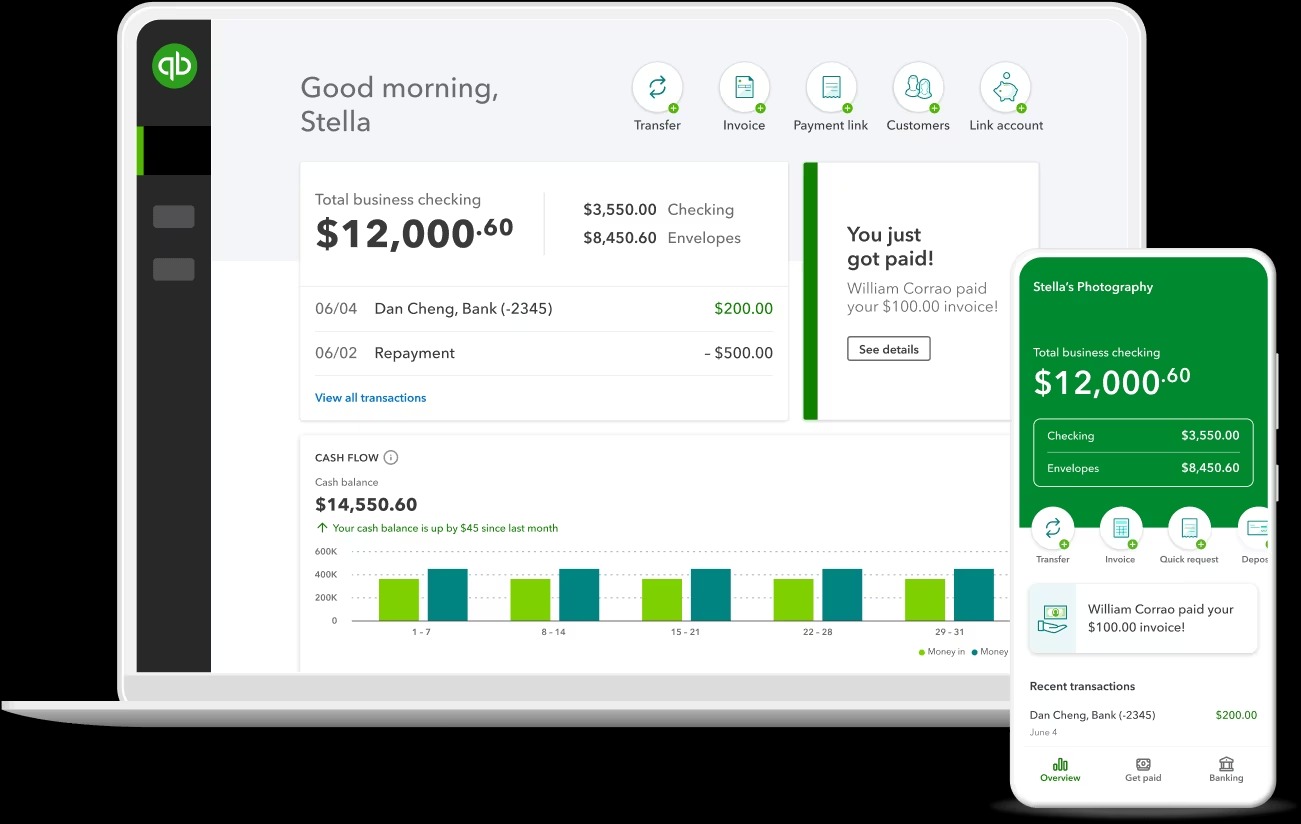

Finance
How Do Small Business Loans Work
Modified: February 21, 2024
Learn how small business loans work and discover the financing options available for your business. Find out how to secure the funds you need with finance solutions tailored for small businesses.
(Many of the links in this article redirect to a specific reviewed product. Your purchase of these products through affiliate links helps to generate commission for LiveWell, at no extra cost. Learn more)
Table of Contents
- Introduction
- Understanding Small Business Loans
- Types of Small Business Loans
- Eligibility Criteria for Small Business Loans
- Application Process for Small Business Loans
- Documentation Required for Small Business Loans
- Loan Approval Process
- Terms and Conditions of Small Business Loans
- Repayment Options for Small Business Loans
- Risks and Considerations of Small Business Loans
- Alternatives to Small Business Loans
- Conclusion
Introduction
Small businesses play a crucial role in driving economic growth and job creation. However, starting or growing a small business often requires significant financial investment. This is where small business loans come into play. Small business loans are a form of financial assistance provided by banks, financial institutions, or alternative lenders to help entrepreneurs and small business owners fund their ventures.
Obtaining a small business loan can be a game-changer for aspiring business owners, as it provides access to the necessary funds to start a new business, expand an existing one, purchase equipment, hire employees, or cover day-to-day expenses. Small business loans offer entrepreneurs the opportunity to turn their visions into reality and fuel economic growth.
In this article, we will dive into the world of small business loans, exploring the different types available, the eligibility criteria required, the application process, and the terms and conditions you should be aware of. We will also discuss the repayment options available as well as the risks and alternatives to consider.
Whether you have an entrepreneurial spirit and are looking to start your own business or you are a small business owner seeking additional financing, understanding the ins and outs of small business loans is crucial for making informed financial decisions.
Understanding Small Business Loans
Small business loans are specifically designed to provide financial assistance to entrepreneurs and small business owners. These loans serve as a lifeline for businesses in need of capital to start, sustain, or expand their operations. Unlike personal loans, small business loans are tailored to meet the unique needs and challenges of businesses.
One of the key distinctions of small business loans is that they are typically secured by the assets of the business or require a personal guarantee from the business owner. This provides lenders with a level of security in case the borrower defaults on the loan.
Small business loans can come in various forms, including traditional bank loans, government-backed loans, and alternative financing options. The terms and conditions, repayment periods, and interest rates can vary depending on the lender and the specific loan product.
The funds obtained through a small business loan can be used for a variety of purposes, such as:
- Starting a new business or acquiring an existing one
- Purchasing equipment, machinery, or inventory
- Expanding existing operations or opening new locations
- Hiring and training employees
- Marketing and advertising
- Working capital to cover day-to-day expenses
It is important to note that small business loans are not free money. Borrowers are obligated to pay back the loan amount along with agreed-upon interest and fees within a specified period of time. The interest rates and repayment terms can vary depending on the lender, the borrower’s creditworthiness, and the loan amount.
Next, we will explore the different types of small business loans available, each offering unique features and benefits to suit various business needs and circumstances.
Types of Small Business Loans
Small business loans come in various types, each catering to different business needs and situations. Understanding the different types of small business loans can help you choose the most suitable option for your business requirements. Here are some common types of small business loans:
- Term Loans: Term loans are the most common type of small business loan. They involve borrowing a fixed amount of money with a predetermined interest rate and set repayment term. These loans are typically used for long-term investments and large purchases, such as buying equipment or expanding business operations. Term loan repayment periods can range from one to ten years, and interest rates can be fixed or variable.
- Line of Credit: A line of credit allows business owners to access a predetermined amount of funds whenever needed. It functions like a revolving credit line, where you only pay interest on the amount you use. Lines of credit are flexible and can be used for various purposes, such as managing cash flow fluctuations, purchasing inventory, or covering unexpected expenses.
- SBA Loans: Small Business Administration (SBA) loans are government-backed loans designed to support small businesses. The SBA guarantees a portion of the loan, reducing the risk for lenders and making it easier for businesses to secure funding. SBA loans typically offer lower interest rates and longer repayment terms compared to traditional loans.
- Equipment Financing: Equipment financing is specifically designed to help businesses purchase equipment or machinery. With this type of loan, the equipment itself serves as collateral, reducing the lender’s risk. Equipment loans generally have fixed interest rates and repayment terms based on the useful life of the equipment being financed.
- Invoice Financing: Invoice financing, also known as accounts receivable financing, allows businesses to get immediate cash by selling their unpaid invoices to a lender at a discount. This can be particularly useful for businesses with cash flow challenges due to delayed payment from customers.
- Merchant Cash Advances: Merchant cash advances provide businesses with a lump sum of cash in exchange for a percentage of future credit card sales. This type of financing is often used by businesses with high volumes of credit card transactions, such as retail stores and restaurants.
- Microloans: Microloans are small loans, typically ranging from a few hundred dollars to around $50,000, offered by micro-lenders or non-profit organizations. These loans are usually targeted at businesses in underserved communities or startups that may not qualify for traditional financing.
It is important to evaluate your business’s specific needs, financial situation, and eligibility criteria when selecting a small business loan type. Consulting with a financial advisor or loan officer can provide valuable guidance in determining the most suitable loan option for your business.
Next, we will delve into the eligibility criteria required to qualify for a small business loan.
Eligibility Criteria for Small Business Loans
While the exact eligibility criteria for small business loans can vary depending on the lender and the specific loan product, there are some common factors that lenders consider when evaluating loan applications. Here are the key eligibility criteria typically required for small business loans:
- Credit Score: Lenders often assess the creditworthiness of borrowers by examining their personal and/or business credit scores. A higher credit score generally improves the chances of loan approval and may also result in more favorable terms and interest rates. However, some lenders may work with borrowers who have lower credit scores, offering alternative financing options.
- Business Age and Experience: Many lenders prefer to work with established businesses that have been in operation for a certain period of time, typically at least one to two years. This requirement ensures that the business has a track record and demonstrates its ability to generate consistent revenue.
- Annual Revenue: Lenders assess the annual revenue of a business to evaluate its financial health and ability to repay the loan. The minimum annual revenue requirement may vary depending on the lender and the loan amount, but it is generally required to demonstrate the business’s capacity to handle the loan repayments.
- Financial Statements: Lenders often require businesses to provide financial statements, including income statements, balance sheets, and cash flow statements. These documents help lenders evaluate the financial stability and profitability of the business.
- Collateral: Depending on the loan type and the lender’s policy, collateral may be required to secure the loan. Collateral can be in the form of real estate, equipment, inventory, or other valuable assets owned by the business or the business owner. Providing collateral reduces the lender’s risk and increases the chances of loan approval.
- Business Plan: Some lenders may require a well-structured business plan that outlines the objectives, strategies, financial projections, and repayment plan for the loan. A comprehensive business plan demonstrates the borrower’s understanding of their business and their ability to manage and repay the loan.
It is important to note that meeting the eligibility criteria does not guarantee loan approval. Lenders consider a range of factors when evaluating loan applications, and each lender may have its own specific requirements and guidelines. Additionally, meeting the minimum eligibility criteria may result in higher interest rates or less favorable loan terms.
Before applying for a small business loan, it is advisable to review the eligibility criteria of different lenders, compare loan options, and work on improving any areas that may impact your loan application. Seeking the guidance of a financial advisor or loan officer can also help you navigate the loan application process and increase your chances of success.
Next, we will explore the application process for small business loans.
Application Process for Small Business Loans
The application process for small business loans can vary depending on the lender and the specific loan product. However, there are some common steps involved in most loan applications. Here is an overview of the typical application process for small business loans:
- Gather Required Documentation: Before applying for a small business loan, gather all the necessary documentation that lenders typically require. This may include financial statements, tax returns, business licenses, bank statements, and a well-prepared business plan. Each lender may have its own specific documentation requirements, so it is important to review their guidelines.
- Research and Compare Lenders: Conduct thorough research to identify potential lenders that offer small business loans and compare their loan options, interest rates, repayment terms, and eligibility criteria. Consider both traditional banks and alternative lenders to find the best fit for your business needs.
- Pre-qualification: Some lenders may offer a pre-qualification process, allowing you to get an idea of your loan eligibility without a hard credit check. This step can help you narrow down your options and focus on lenders that are more likely to approve your loan application.
- Submit Loan Application: Once you have chosen a lender, it’s time to officially submit your loan application. Complete the application form accurately, providing all required information and supporting documentation. Double-check for any errors or inconsistencies before submitting.
- Wait for Loan Approval Decision: After submitting your application, the lender will review your information and make a loan approval decision. This process can take anywhere from a few days to a few weeks, depending on the lender’s internal processes and the complexity of the application.
- Loan Underwriting: If your loan application is approved, the lender will move forward with the underwriting process. This involves conducting a thorough evaluation of your business, financials, and creditworthiness to determine the final loan terms and conditions.
- Loan Offer and Closing: If your loan application and underwriting process are successful, the lender will present you with a loan offer. Review the offer carefully, including the interest rate, repayment terms, and any associated fees. If you agree to the terms, you will sign the loan agreement and complete the loan closing process.
- Receive Funds: Once the loan closing is complete, the funds will be disbursed to your designated account. You can then use the funds for the intended business purposes outlined in your loan application. Be sure to keep track of your loan repayment schedule and make timely payments.
It is important to note that the application process can be time-consuming and may require a lot of paperwork. Being prepared with all the necessary documentation and ensuring accuracy in your application can help expedite the process and increase your chances of loan approval.
Next, we will discuss the documentation required for small business loans.
Documentation Required for Small Business Loans
When applying for a small business loan, you will need to provide various documents to support your loan application. The specific documentation requirements may vary between lenders and loan types, but here are some common documents you may need to gather:
- Business Plan: A well-structured business plan is often required by lenders to assess your business’s viability and growth potential. The business plan should outline your goals, strategies, financial projections, and repayment plan.
- Financial Statements: Lenders typically request financial statements to evaluate the financial health of your business. These may include income statements, balance sheets, cash flow statements, and tax returns for the previous one to three years.
- Personal and Business Tax Returns: Lenders may require personal and business tax returns to verify your income and business profitability. This helps lenders assess your ability to repay the loan.
- Bank Statements: Providing recent bank statements helps lenders assess your business’s cash flow and financial stability. It reflects your business’s revenue, expenses, and any outstanding loans or debts.
- Legal Documents: Depending on your business structure, you may need to provide legal documents such as articles of incorporation, partnership agreements, or business licenses to prove the legitimacy of your business.
- Collateral Documentation: If collateral is required for the loan, you will need to provide documentation related to the collateral, such as property deeds, vehicle ownership papers, or equipment registration documents.
- Personal Identification: You will typically need to provide personal identification documents, such as a driver’s license or passport, to verify your identity.
- Business Ownership and Financial History: Lenders may require documents that demonstrate your ownership of the business, such as partnership agreements, shareholder agreements, or operating agreements. They may also request information about any past bankruptcies or outstanding liens on your business.
- Other Supporting Documents: Depending on the lender and the loan application, additional documents may be requested, such as business contracts, customer invoices, or supplier agreements.
It’s important to note that providing thorough and accurate documentation is crucial for the loan application process. Missing or incomplete documents can delay the approval process or even result in a rejected application. Therefore, it is advisable to review the specific documentation requirements of the lender you plan to apply with and ensure you have all the necessary paperwork in order.
Next, we will explore the loan approval process for small business loans.
Loan Approval Process
The loan approval process for small business loans involves several steps that lenders take to evaluate your loan application and make a decision. While the exact process can vary between lenders, here is a general overview of the loan approval process:
- Application Review: Once you submit your loan application, the lender will review it to ensure that all required information and documentation are provided. They will assess your business’s financial health, creditworthiness, and eligibility based on the information provided.
- Underwriting: Upon completing the initial review, the lender will move forward with the underwriting process. This involves a more detailed analysis of your business’s financials, credit history, and repayment capacity. The underwriter may request additional information or clarification during this stage.
- Credit Check: The lender will conduct a credit check on both the business and the business owner(s) to assess creditworthiness. They will review your credit scores, credit history, and any outstanding debts or liabilities.
- Collateral Evaluation: If the loan requires collateral, the lender will assess the value of the collateral and its potential to cover the loan amount in case of default. This evaluation helps determine the level of risk associated with the loan.
- Decision Making: Based on the information gathered during the application review, underwriting, credit check, and collateral evaluation, the lender will make a decision regarding your loan application. They may approve the loan, deny it, or request additional information or modifications to the loan terms.
- Loan Offer: If your loan application is successful, the lender will provide you with a loan offer. This offer will outline the loan amount, interest rate, repayment terms, any associated fees, and other relevant details. Review the offer carefully and make sure you understand all the terms and conditions.
- Loan Acceptance and Closing: If you agree to the terms of the loan offer, you will need to accept the loan and provide any additional documentation requested by the lender. Once all the necessary paperwork is completed, the loan will move into the closing phase.
- Disbursement of Funds: After the loan closing is complete, the lender will disburse the approved loan amount to your designated bank account. You can then use the funds for the intended business purposes outlined in your loan application.
It is important to note that the loan approval process can vary in duration, ranging from a few days to several weeks, depending on the lender and the complexity of the loan application. Some lenders may offer expedited processing for certain loan types or for borrowers with exceptional creditworthiness.
During the loan approval process, it is essential to maintain open communication with the lender and promptly provide any requested information or documentation. Being prepared, organized, and responsive can help expedite the process and increase your chances of loan approval.
Next, we will explore the terms and conditions associated with small business loans.
Terms and Conditions of Small Business Loans
When securing a small business loan, it is important to understand the terms and conditions associated with the borrowing agreement. These terms and conditions outline the responsibilities and obligations of both the borrower (you) and the lender. Here are some key terms and conditions that you should be familiar with:
- Loan Amount: The loan amount refers to the total sum of money that the lender agrees to lend to your business. This amount can vary depending on your needs, the lender’s assessment, and the loan product.
- Interest Rate: The interest rate is the cost charged by the lender for borrowing the money. It is expressed as a percentage and can be fixed or variable. The interest rate significantly impacts the total amount you will have to repay over the life of the loan.
- Repayment Term: The repayment term is the period within which the loan must be repaid in full. It can vary depending on the loan type, the loan amount, and the agreement between you and the lender. Repayment terms typically range from months to years.
- Repayment Schedule: The repayment schedule outlines the specific timing and amounts of payments that you are required to make to the lender. It may be structured as monthly payments or other agreed-upon intervals.
- Collateral: In some cases, lenders may require collateral to secure the loan. Collateral acts as a form of security for the lender, serving as a backup source of repayment in case you default on the loan. If you cannot repay the loan, the lender may claim the collateral.
- Fees and Charges: In addition to the interest rate, there may be other fees and charges associated with the loan. These can include origination fees, application fees, late payment fees, prepayment penalties, and more. Be sure to review the loan agreement carefully to understand all the fees and charges involved.
- Early Repayment: Some loan agreements allow for early repayment, meaning you can repay the loan in full before the end of the agreed-upon term. However, there may be penalties or fees associated with early repayment. Review the terms regarding early repayment to understand the implications.
- Default and Remedies: The terms and conditions of the loan will specify what constitutes a default, such as missing payments or breaching other terms. It is important to understand the consequences of default, as it may result in late fees, collection efforts, damage to your credit score, or even legal action taken by the lender.
- Amendments and Modifications: The terms and conditions may outline the process for making amendments or modifications to the loan agreement. This could include changes to the loan amount, interest rate, repayment schedule, or other important terms. Understand how and when amendments can be made, and whether they require mutual agreement.
It is crucial to carefully review the terms and conditions of the loan agreement before accepting the loan offer. If there are any unclear or confusing aspects, don’t hesitate to seek clarification from the lender or consult with a legal or financial advisor. Understanding and adhering to the terms and conditions will help ensure smooth loan repayment and maintain a positive relationship with the lender.
Next, we will explore the repayment options available for small business loans.
Repayment Options for Small Business Loans
Repaying a small business loan is a crucial obligation for borrowers. Understanding the available repayment options can help you manage your loan repayments effectively and avoid any financial strain. Here are some common repayment options for small business loans:
- Fixed Monthly Payments: With this repayment option, you will make equal monthly payments throughout the loan term. The payments include both the principal amount borrowed and the interest accrued. Fixed monthly payments provide predictability and allow you to budget accordingly.
- Interest-Only Payments: In some cases, lenders offer the option to make interest-only payments for a certain period, typically at the beginning of the loan term. During this time, you only pay the interest accrued on the loan, and the principal amount remains unchanged. This can be beneficial in the early stages of your business when cash flow might be limited.
- Seasonal Payments: For businesses with seasonal revenue fluctuations, lenders may offer the option of seasonal payments. With this arrangement, you make larger loan payments during your peak business season and smaller payments during slower periods. This repayment structure enables you to align your loan payments with your cash flow patterns.
- Flexible Payments: Some lenders provide flexibility in loan repayment, allowing you to make additional payments or pay off the loan early without incurring penalties. This option can help you save on interest costs and reduce the overall loan term.
- Automatic Payments: Many lenders offer the convenience of automatic loan payments, where the loan amount is deducted directly from your bank account on a predetermined schedule. Automatic payments ensure timely repayments and help you avoid late fees.
- Loan Consolidation: If you have multiple small business loans, loan consolidation may be an option. This involves combining your loans into a single loan with one monthly payment. Consolidation can simplify your repayment process and potentially lower your overall interest rate.
When choosing a repayment option, consider your business’s cash flow, revenue patterns, and financial goals. It is essential to select an option that aligns with your current financial capabilities and provides room for any future business growth or unexpected expenses.
If you are facing difficulties in making loan repayments, it is important to communicate with your lender as early as possible. They may offer various solutions, such as adjusting the repayment schedule, deferring payments for a certain period, or providing forbearance options, based on your circumstances.
Regardless of the repayment option you choose, it is crucial to make your loan payments on time and in full. Late or missed payments can have negative consequences, including late fees, penalties, damage to your credit score, and even legal action from the lender.
Next, we will discuss the risks and considerations associated with small business loans.
Risks and Considerations of Small Business Loans
While small business loans can provide much-needed funding for entrepreneurs and small business owners, it is important to be aware of the risks and considerations involved. Understanding these factors can help you make informed decisions and mitigate potential challenges. Here are some risks and considerations to keep in mind:
- Debt Burden: Taking on a small business loan means adding a financial obligation to your business. It is crucial to evaluate your business’s ability to manage the loan repayment alongside other operating expenses and financial commitments. Excessive debt can strain your cash flow and potentially hinder your business’s growth.
- Interest Rates and Fees: The interest rates and fees associated with small business loans can vary depending on the lender and loan type. High interest rates and fees can significantly impact the total cost of borrowing. Before accepting a loan offer, carefully review and compare interest rates, fees, and terms from multiple lenders to ensure you are getting the most favorable deal.
- Credit Implications: Taking on a small business loan can have an impact on your business and personal credit scores. Missed or late payments can negatively affect your creditworthiness, making it challenging to secure future financing. Prioritize making loan payments on time and maintaining a strong credit history.
- Collateral Requirements: Some small business loans require collateral to secure the loan. If you default on the loan, the lender may seize the collateral as repayment. It is crucial to understand the implications of providing collateral and assess whether you are comfortable with the associated risks.
- Business Stability: Consider your business’s stability and potential challenges when deciding to take out a small business loan. If your business is experiencing uncertain or volatile market conditions, taking on additional debt may not be advisable. Ensure that you have a clear plan for utilizing the loan proceeds to improve your business’s performance.
- Market and Industry Risks: External factors, such as changes in the market or industry, can impact your business’s success and ability to repay the loan. Conduct thorough market research and risk analysis to understand the potential risks and challenges your business may face in the future.
- Alternative Financing Options: While small business loans are a common choice for funding, consider exploring alternative financing options. These may include grants, crowdfunding, venture capital, or angel investors. Each option has its own benefits and limitations, so evaluate what aligns best with your business’s needs and goals.
Prior to taking on a small business loan, it is advisable to consult with a financial advisor or accountant to evaluate your business’s financial health, assess the loan’s affordability, and analyze the potential risks involved. Engaging with professionals can provide valuable insights and help you make informed decisions regarding your business’s financial future.
Next, we will explore some alternatives to small business loans.
Alternatives to Small Business Loans
While small business loans are a common financing option, there are alternatives available for entrepreneurs and small business owners. Exploring these alternatives can provide additional sources of funding and may better align with your business’s specific needs and circumstances. Here are some alternatives to consider:
- Grants: There are various grants available for small businesses, offered by government agencies, non-profit organizations, and private foundations. Grants provide non-repayable funds that can be used for specific business purposes, such as research and development, innovation, or community development initiatives.
- Crowdfunding: Crowdfunding platforms allow you to raise funds by collecting small contributions from a large number of individuals. It can be an effective way to generate capital for launching a new product, financing a project, or expanding your business. Crowdfunding can also help validate your business idea and build a community of supporters.
- Angel Investors: Angel investors are individuals or groups who invest their own funds in early-stage businesses in exchange for equity or a stake in the company. These investors often provide not only capital but also mentorship and industry connections. Seeking out angel investors can be a viable option if you are looking to grow your business rapidly and need additional expertise.
- Venture Capital: Venture capital firms invest in high-growth potential businesses in exchange for equity. These firms typically target startups and early-stage companies with innovative ideas and significant growth prospects. Venture capital funding can provide substantial capital and strategic guidance, but it often involves giving up a portion of ownership and control.
- Business Incubators and Accelerators: Business incubators and accelerators provide support and resources to early-stage businesses. They offer mentorship, networking opportunities, and access to investors. In addition, some programs provide funding in the form of grants, seed capital, or subsidized office space.
- Friends and Family: Borrowing money from friends and family can be an option, especially for small amounts. It’s important to approach these relationships professionally and have clear agreements in place to avoid any strain on personal relationships.
- Bootstrapping: Bootstrapping involves self-funding your business using personal savings or revenue generated by the business. While this option may require slower growth and tighter budgets, it allows you to maintain full ownership and control over your business.
Each alternative financing option has its own advantages, limitations, and considerations. It is important to thoroughly research and evaluate the suitability of each option for your specific business needs, goals, and stage of development.
When considering alternatives to small business loans, it can also be valuable to consult with a financial advisor, mentor, or business development organization. They can provide guidance and help you navigate the various options available, ultimately guiding you toward the most appropriate funding solution for your business.
Next, we will conclude our exploration of small business loans and alternative financing options.
Conclusion
Small business loans serve as a vital source of funding for entrepreneurs and small business owners, providing the financial assistance needed to start, sustain, or expand their ventures. Understanding the ins and outs of small business loans is crucial for making informed financial decisions.
In this article, we explored the various aspects of small business loans, including their purpose, types, eligibility criteria, application process, documentation requirements, terms and conditions, repayment options, risks, and alternatives. Armed with this knowledge, you can navigate the world of small business loans with greater confidence.
When considering a small business loan, it is essential to evaluate your business’s financial health, cash flow, and long-term goals. Carefully research and compare different lenders and loan options to find the best fit for your specific business needs. Be aware of the risks and responsibilities associated with borrowing, such as debt burden and credit implications.
Additionally, explore alternatives to small business loans, such as grants, crowdfunding, angel investors, and venture capital. These alternative funding sources can provide different opportunities and align with your business’s unique requirements and growth potential.
Remember, seeking guidance from financial advisors, mentors, or business development organizations can provide additional insights and support in making sound financial decisions.
As you move forward in your entrepreneurial journey, consider the financial requirements of your business carefully. With the right funding and financial management strategies in place, you can set your small business on a path to success and growth.














